These 4th of July macarons are the perfect patriotic treat to celebrate Independence Day! The red & blue chewy shells are sandwiched together with a creamy, light mascarpone frosting. When chilled in the fridge, the frosting transforms into an almost ice cream-like consistency, making them an ideal delicate cookie for a hot summer day.
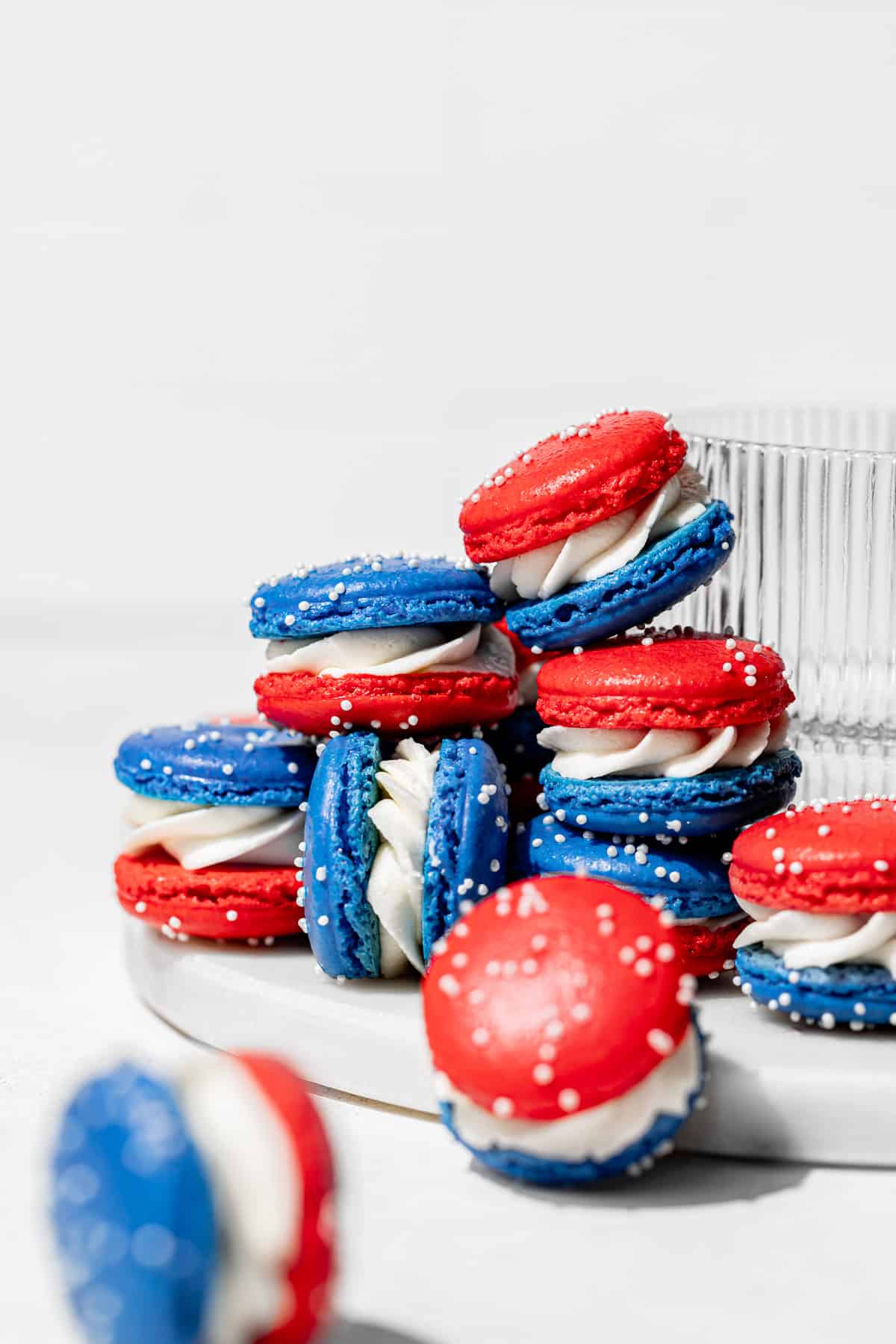
For more 4th of July desserts, try 4th of July Cookies, 4th of July Funfetti Cake, Oreo Ice Cream Cake, and Gluten Free Strawberry Shortcake Cake.
Jump to Recipe
Why you'll love these red white and blue macarons
- Swiss Method: The macaron shells are made with a base of sturdy swiss meringue, making them nearly foolproof!
- Festive Red White & Blue: A few drops of food coloring gel and some white sprinkles make these macs perfect for celebrating the 4th!
- Creamy, Light Mascarpone Frosting: Mascarpone frosting is essentially a thicker whipped cream made with mascarpone cheese, heavy cream, and a touch of granulated sugar. Once the macarons are chilled, the frosting transforms into an almost ice cream-like consistency, and it tastes absolutely heavenly.
Ingredient Notes
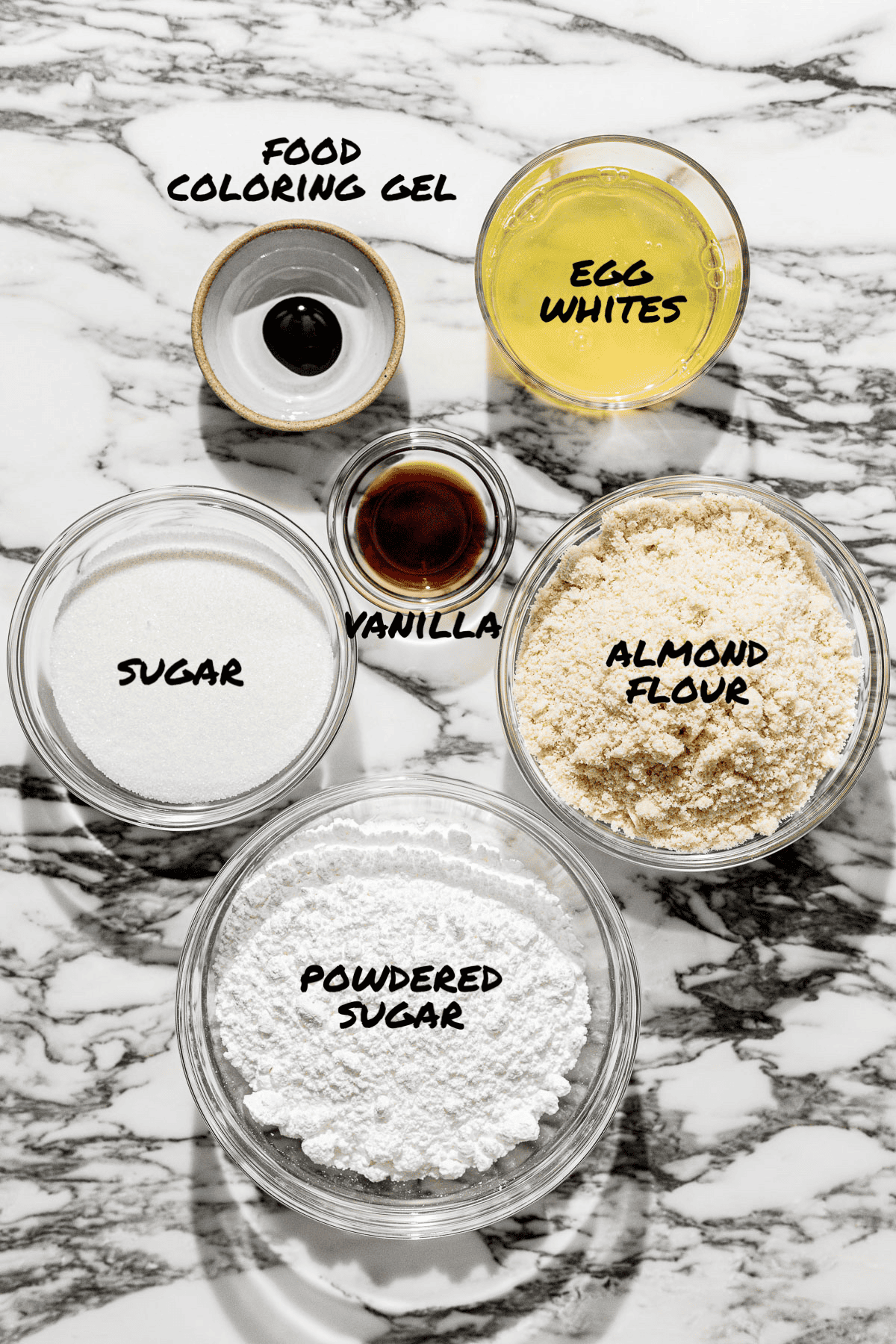
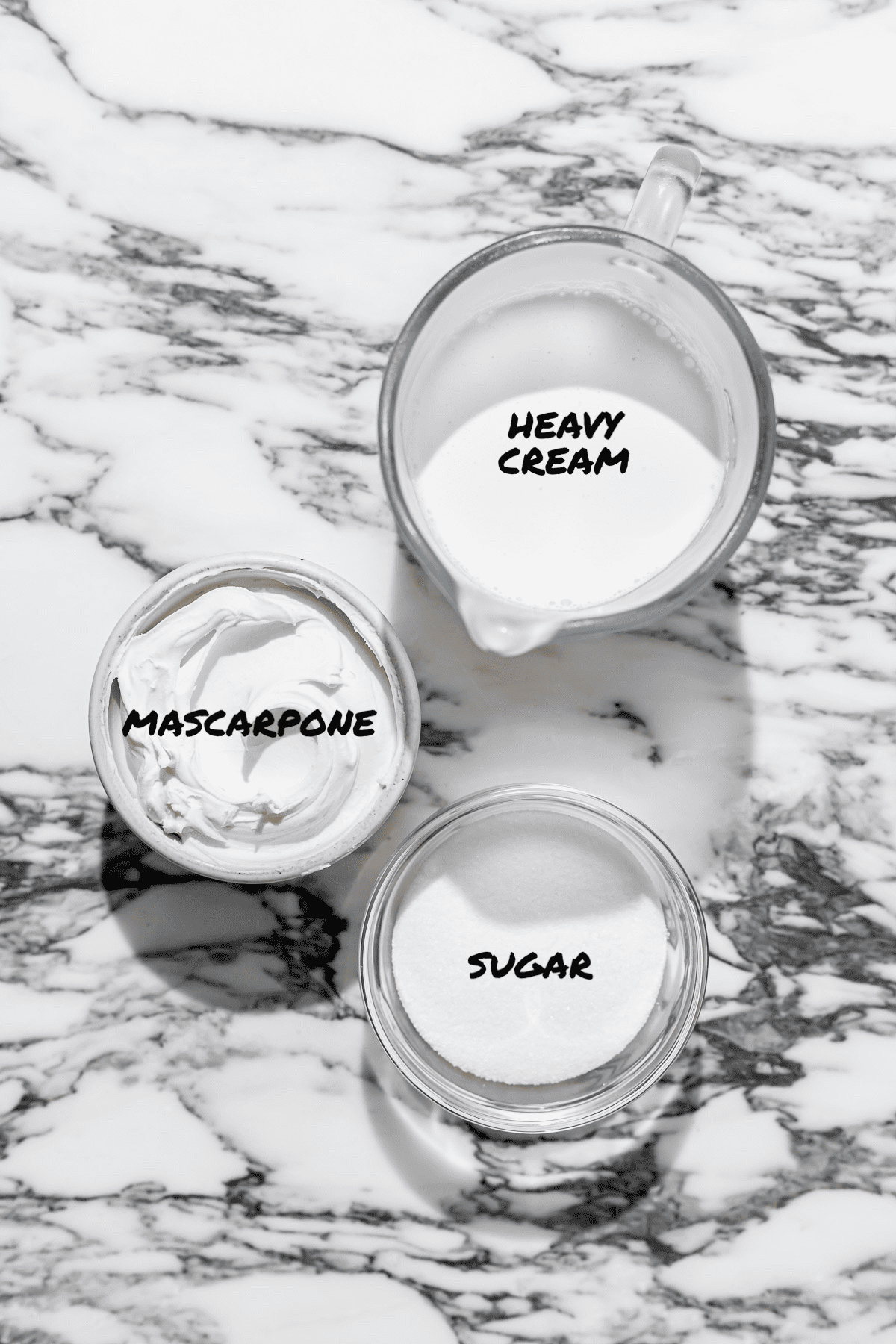
- Powdered Sugar: You’ll need powdered sugar for the macaron shells.
- Almond Flour: Be sure to use extra fine almond flour to get those super smooth shells!
- Egg Whites: You’ll need about 3 egg whites. Don’t worry about bringing them to room temperature because you’ll just heat them up over a double boiler to make a swiss meringue!
- Granulated Sugar: This is going to be added into the egg whites when making the swiss meringue. It will only take a couple minutes for the sugar to dissolve into the egg whites, so watch carefully!
- Vanilla Extract: Optional, but always a great flavor addition for both the macaron shells and the buttercream.
- Gel Food Coloring: Add red and blue food coloring to the shells. Americolor is my favorite!
- White Nonpareil Sprinkles: Optional, but they make them so cute!
- Heavy Cream: Use cold heavy cream for the frosting.
- Mascarpone: Mascarpone cheese is similar to cream cheese in consistency but milder in flavor. Be sure to keep it cold before making the frosting!
See recipe card for full information on ingredients and individual quantities.
Step by Step Instructions
Here are step by step photos and instructions on how to make this 4th of July macaron recipe! For the full ingredient list and method, see the recipe card at the end of this post.
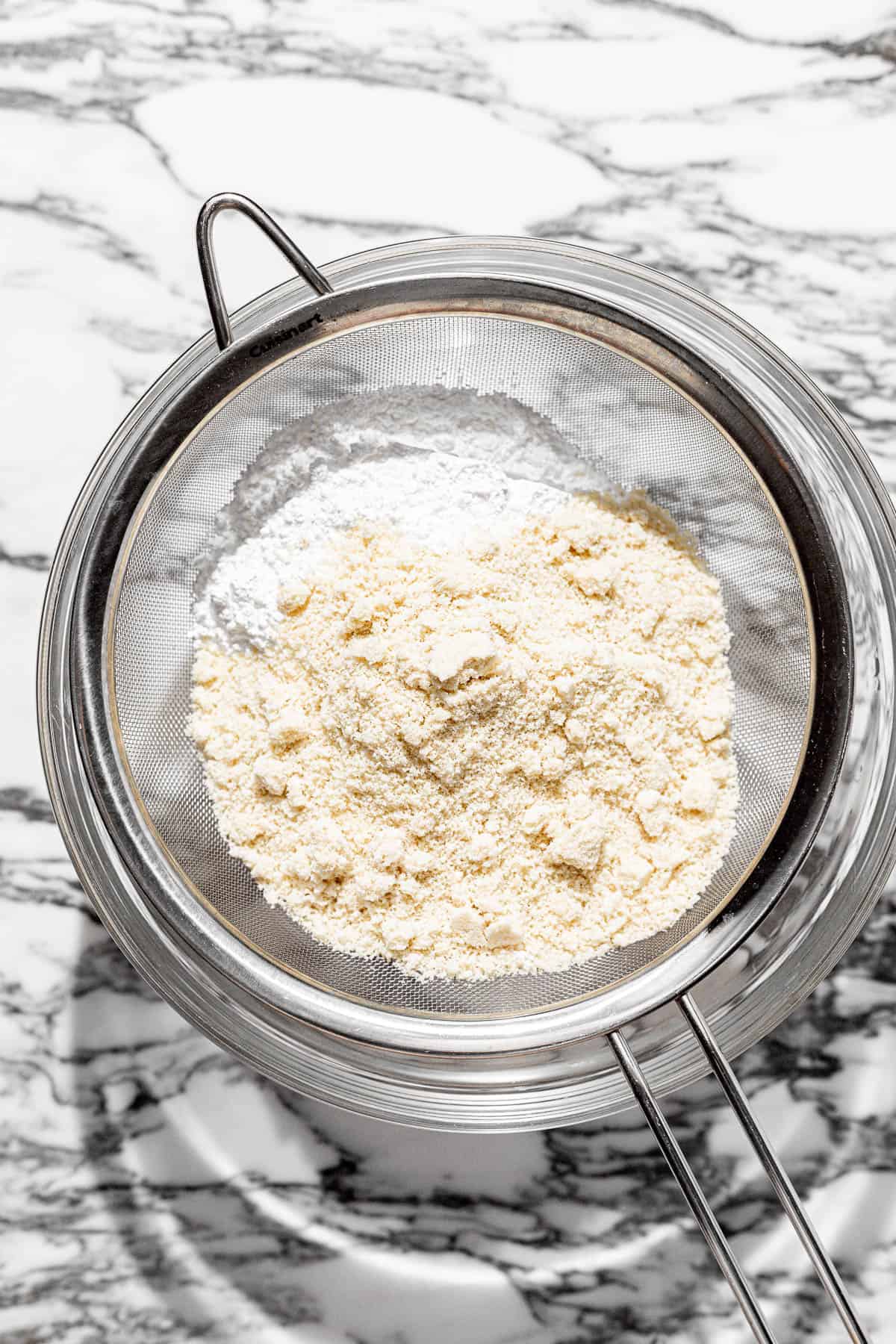
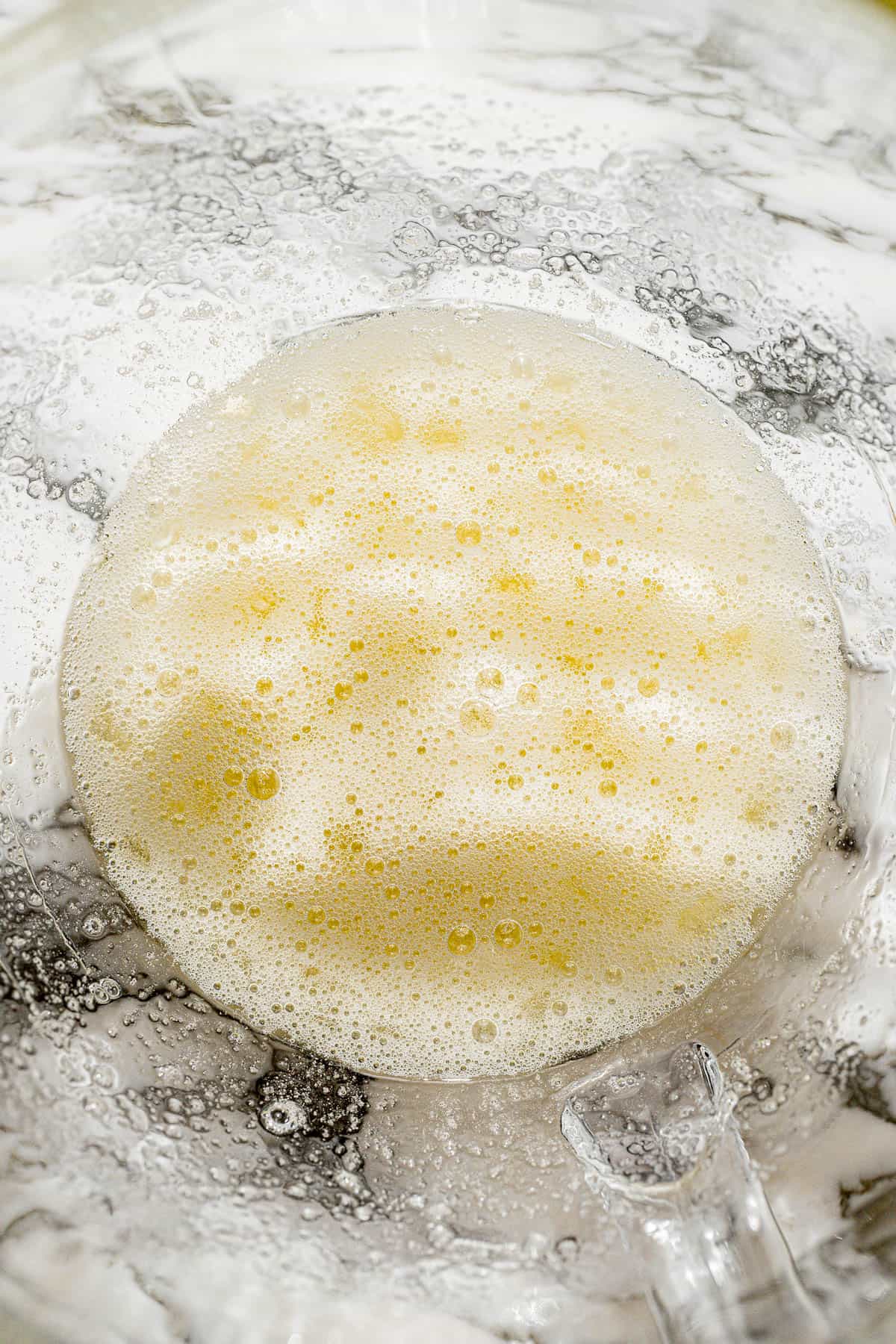
STEP 1: Sift the dry ingredients. In a medium bowl, sift the almond flour and powdered sugar, twice.
STEP 2: Place egg whites & sugar over double boiler. Next, heat the egg whites and granulated sugar over a double boiler until the sugar has dissolved or until the temperature is about 120 degrees F.
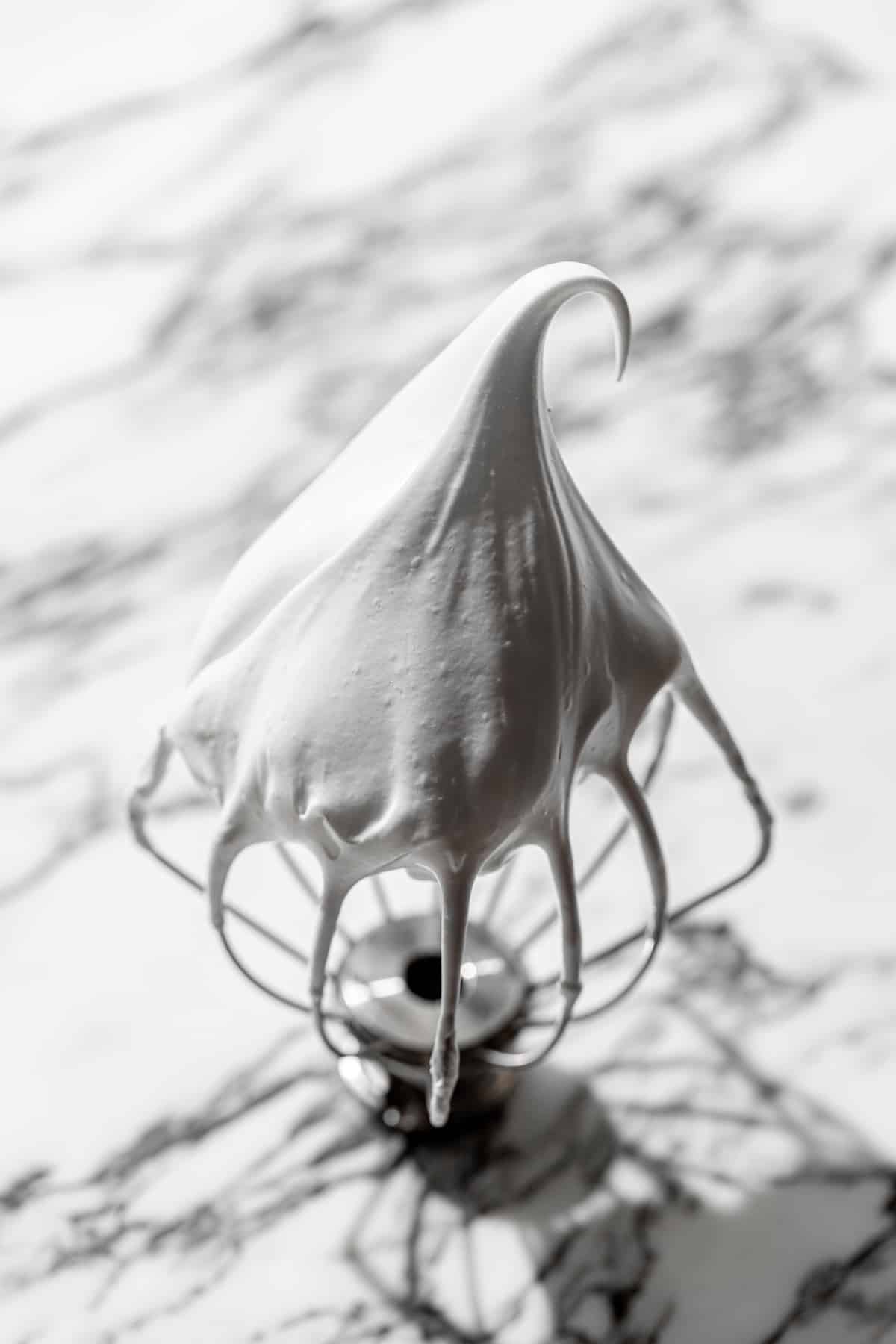
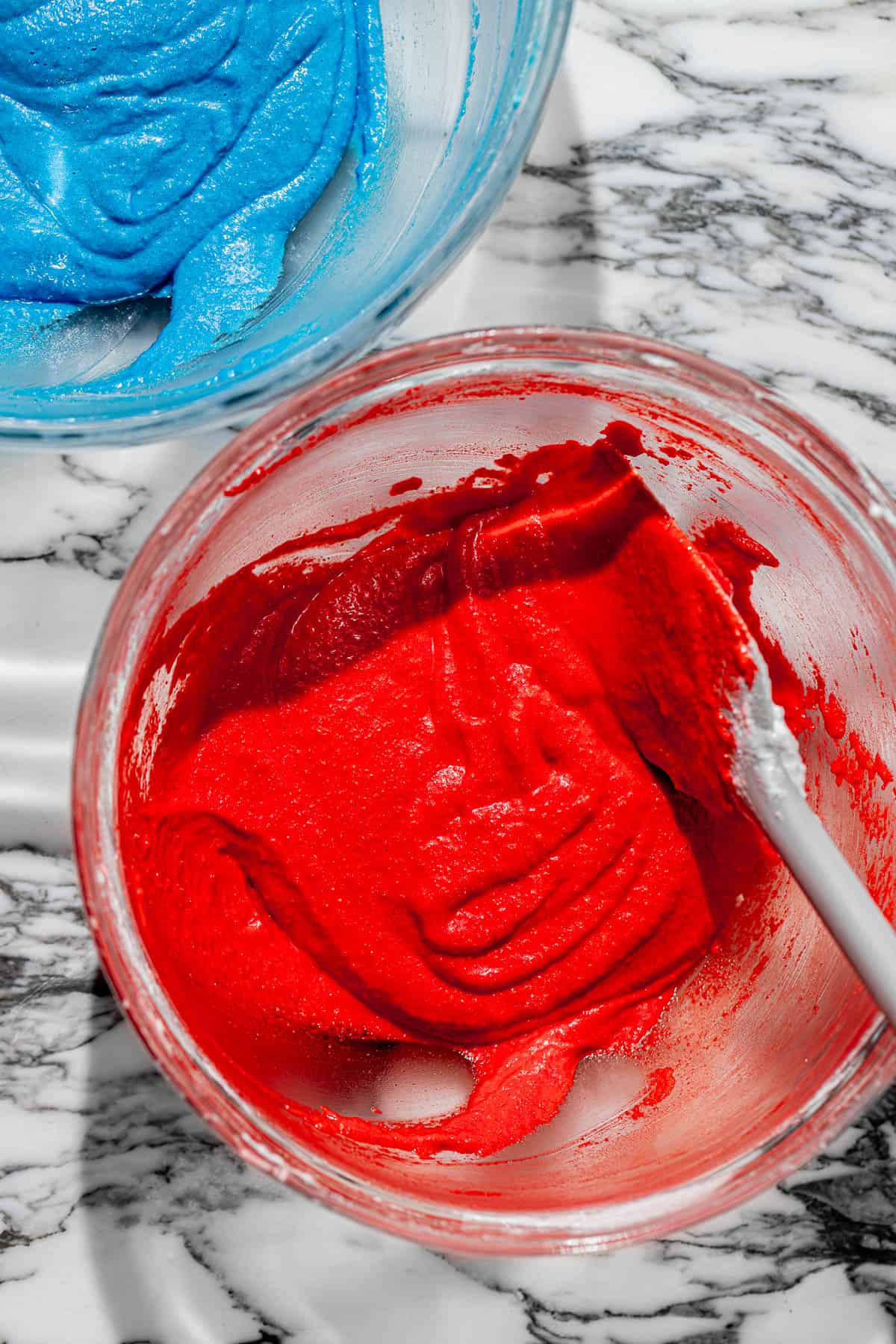
STEP 3: Whip the meringue to stiff peaks. Transfer the egg white mixture to a large bowl or a bowl of a stand mixer fitted with a whisk attachment. Whisk until the mixture reaches soft peaks. At this point, you can add the vanilla extract. Continue whisking the meringue until stiff peaks form.
STEP 4: Mix the meringue & dry ingredients in two bowls. Divide the meringue evenly between two bowls, about 95g each. Divide the dry ingredients between the same two bowls, about 124g each. Add 10 drops of red food coloring to one bow, and 10 drops of blue food coloring to the other. Start the macaronage by using a rubber spatula to scrape around the sides of the bowl, then through the middle of the batter. Once the dry ingredients are fully incorporated, begin spreading the batter along the sides of the bowl to deflate it slightly. Continue scraping around the sides of the bowl and through the middle. The mixture is ready when you can draw several figure eights without the batter breaking.
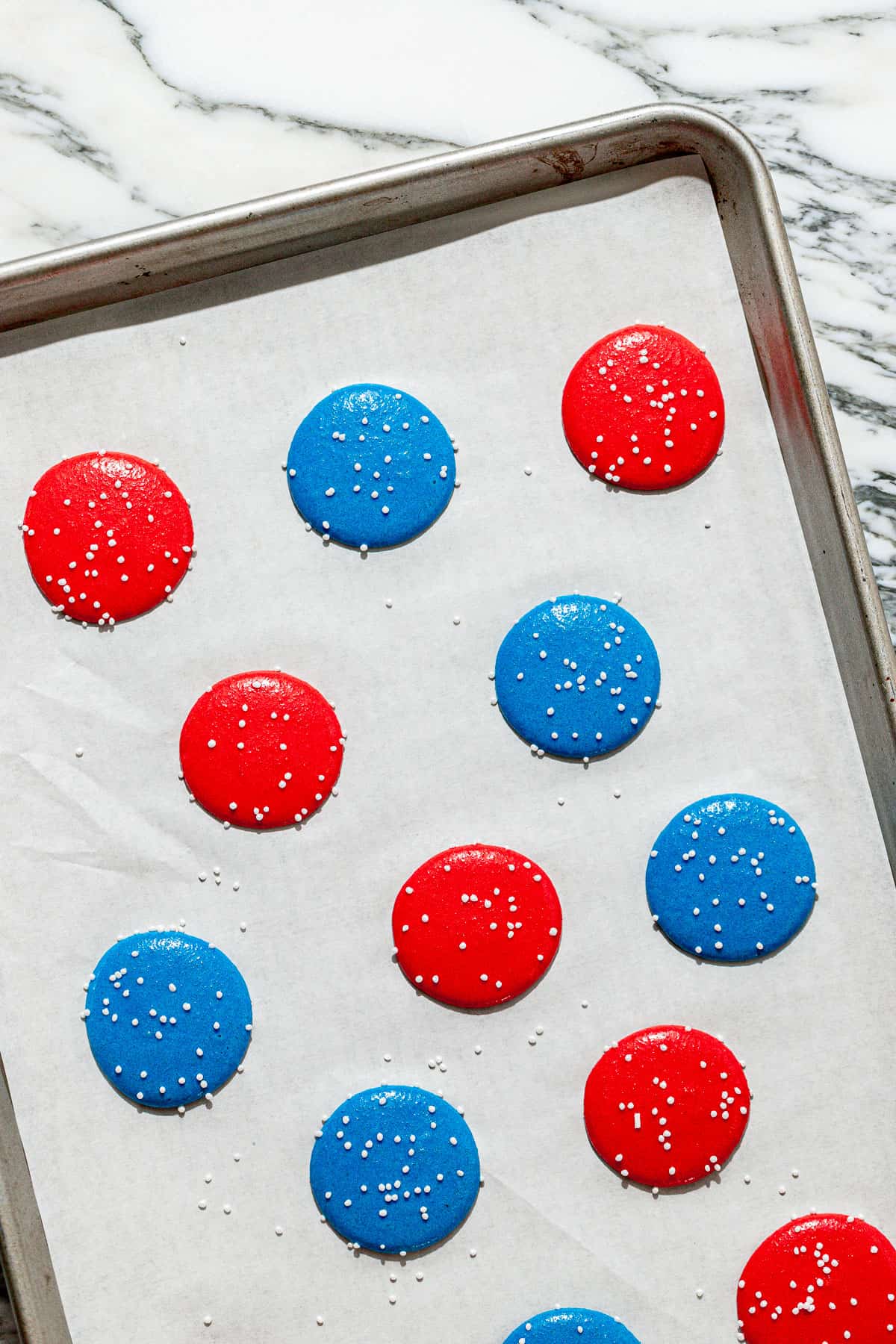
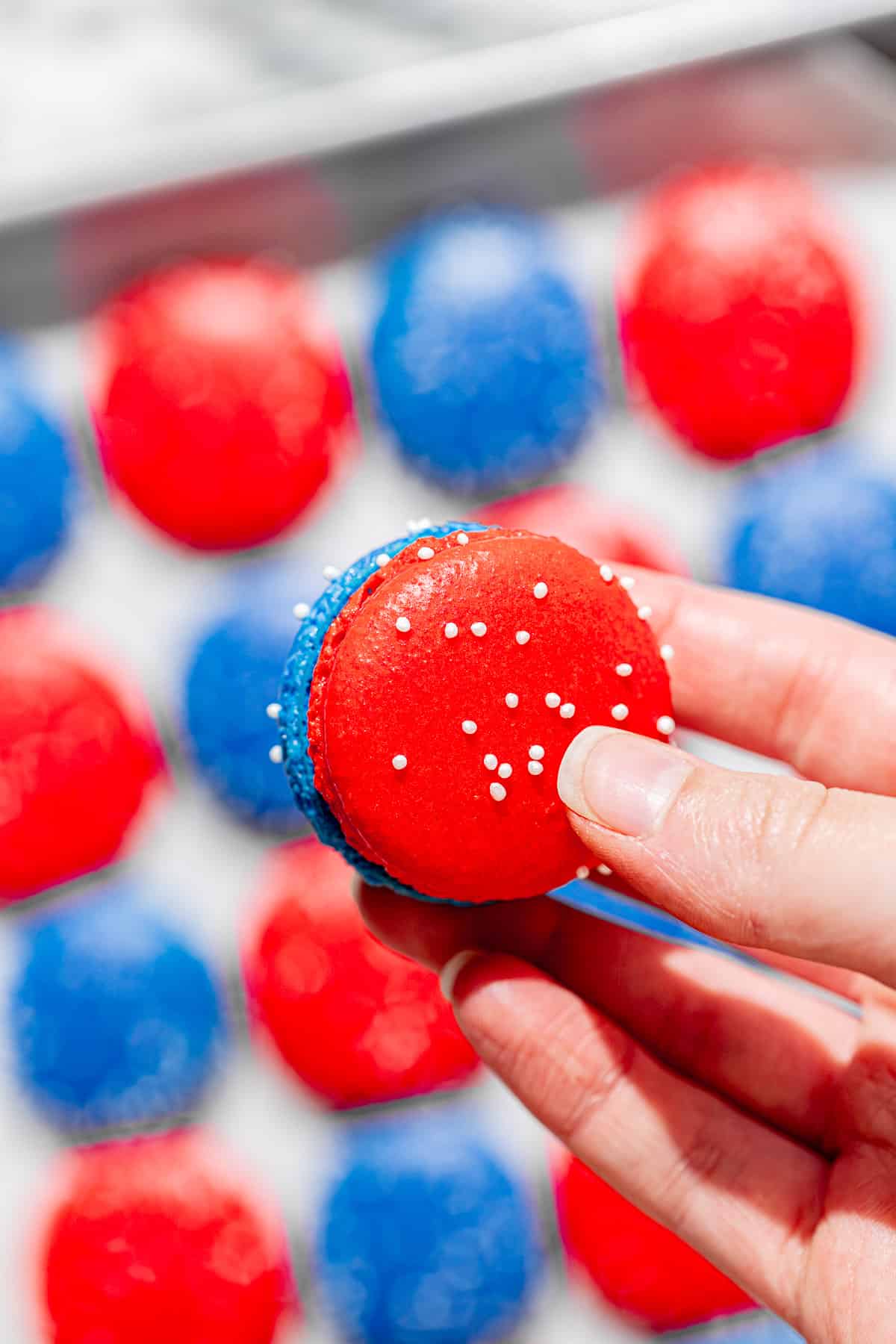
STEP 5: Pipe the macaron batter, rest, then bake. Transfer the batters to separate piping bags with small round piping tips (I used Ateco 802 & 803). Place your macaron template under another piece of parchment paper on a baking sheet and pipe the batter perpendicular to fill in each circle.
Carefully remove the template and tap the cookie sheet on the on counter a few times in order to release any air bubbles. Add the white sprinkles, if using. Let the macarons rest for about 30-45 minutes, or until they are dry and no longer sticky to the touch. Bake the macarons for about 12-14 minutes.
STEP 6: Pair up the shells. Pair up each macaron shell with a matching one of equal size.
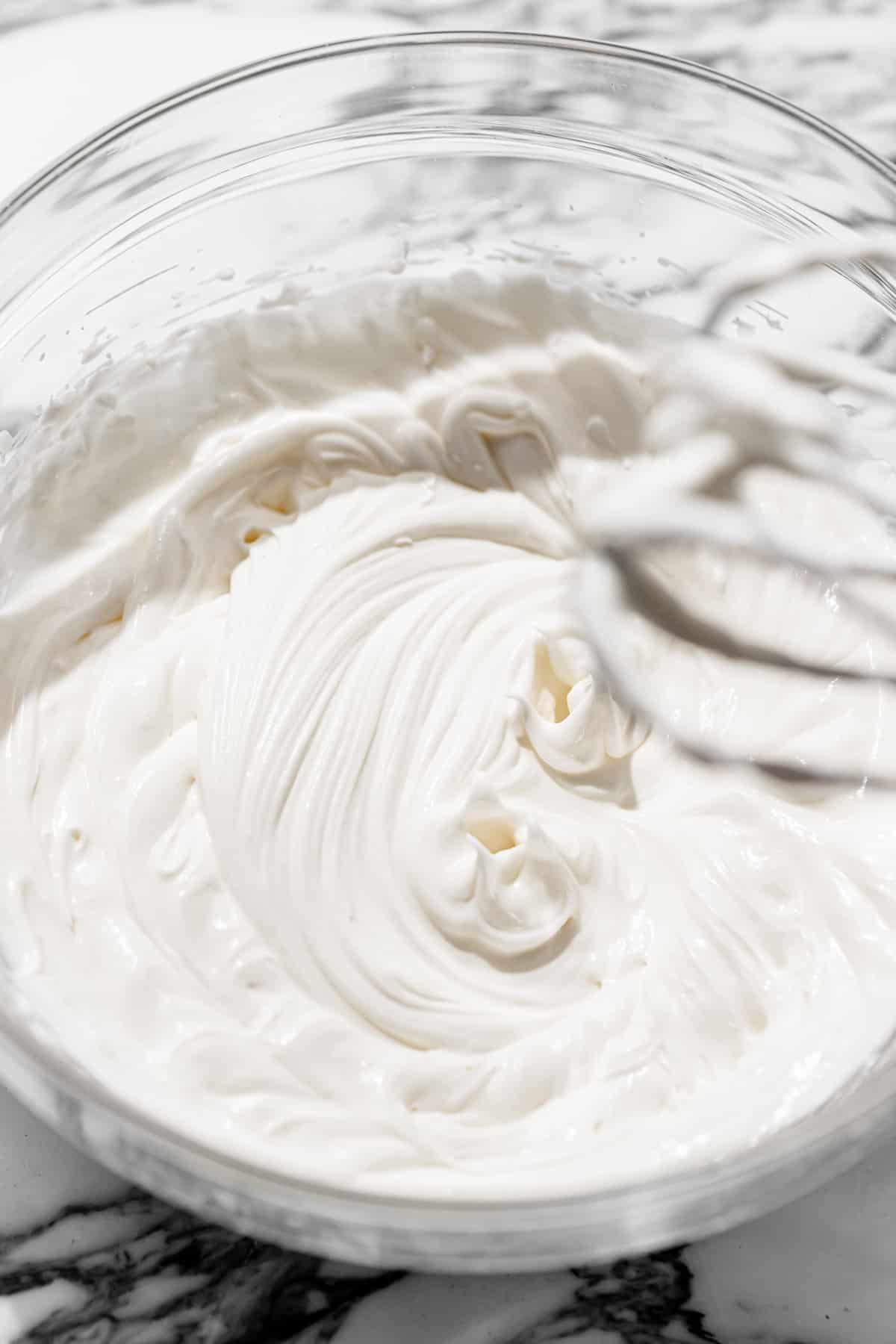
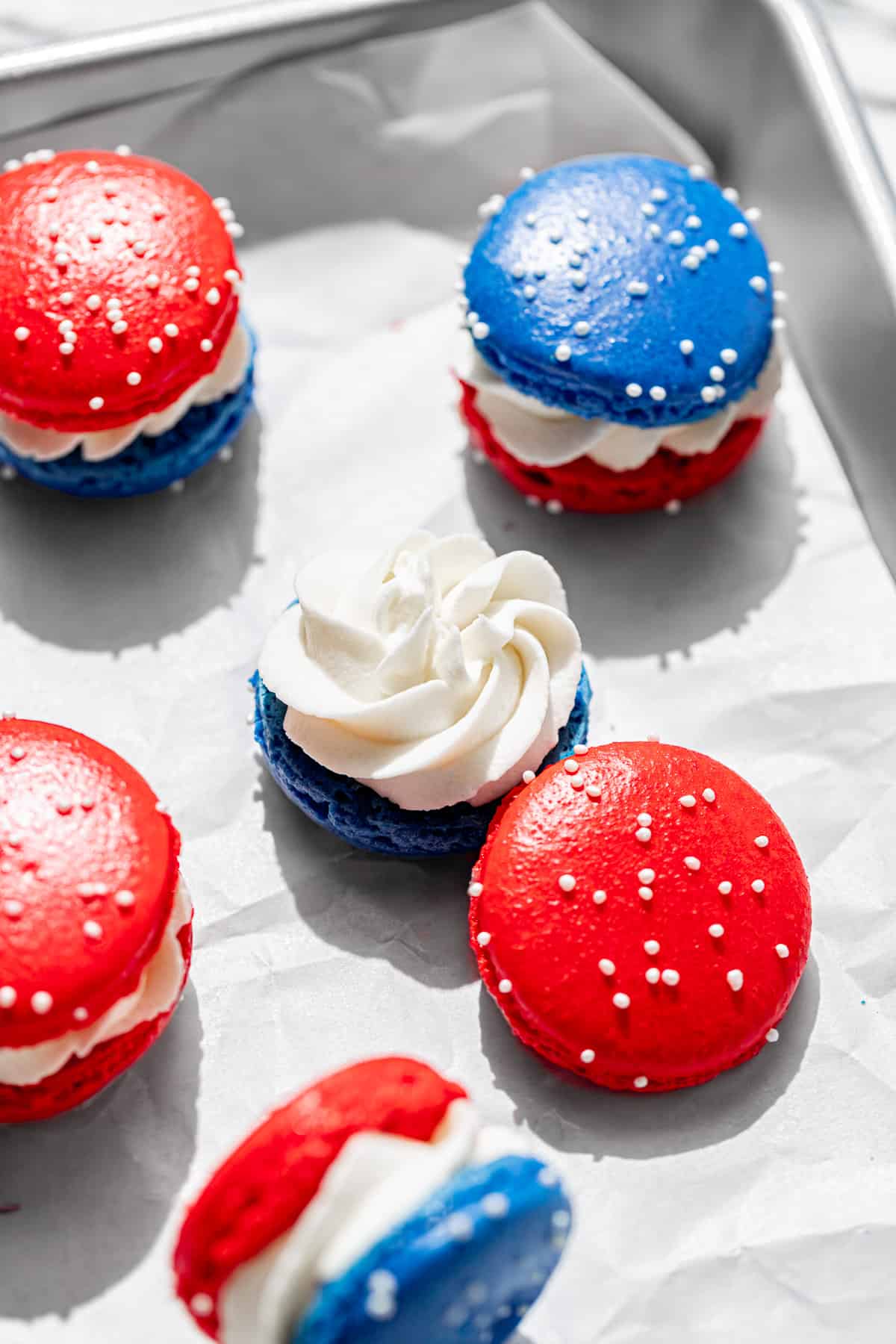
STEP 7: Make the mascarpone frosting. In a medium bowl, add the heavy cream, mascarpone, and sugar. Use an electric mixer to beat on low-medium speed until thick, smooth, and stiff peaks form.
STEP 8: Assemble. Transfer the frosting to a piping bag fitted with a small star tip (I used Wilton 1M). Pipe the frosting onto the bottom shell, then place the paired shell on top, pressing down slightly to ensure they stick together. Place the macarons in the fridge until ready to serve.
6 Essential Macaron Rules
- Wipe down all bowls and appliances with white vinegar. This will ensure that everything is spotlessly clean and nothing will hinder the stability of the meringue.
- Beat the meringue until STIFF peaks form. The best way to test this is to turn the bowl upside down to make sure that the meringue is stable enough and does not move at all.
- SIFT SIFT SIFT! You need to sift the powdered sugar and almond flour twice to get those smooth macaron shells!
- Mix the batter with a silicone spatula by circling around and straight through the middle. Once all of the dry ingredients are incorporated, deflate the macaron batter by spreading it against the sides of the bowl. This will ensure that the shells do not come out hollow.
- Test the consistency of the batter frequently by drawing a figure eight with the silicone spatula. You should be able to draw a figure eight a few times in a row without the batter breaking. This is how you know the batter is ready to be piped onto a baking sheet.
- Allow the macarons to rest long enough before going into the oven. I would recommend 30-45 minutes of rest time before baking. As they rest, a skin forms on the surface, which is what forces the macarons to bake upwards and grow feet!
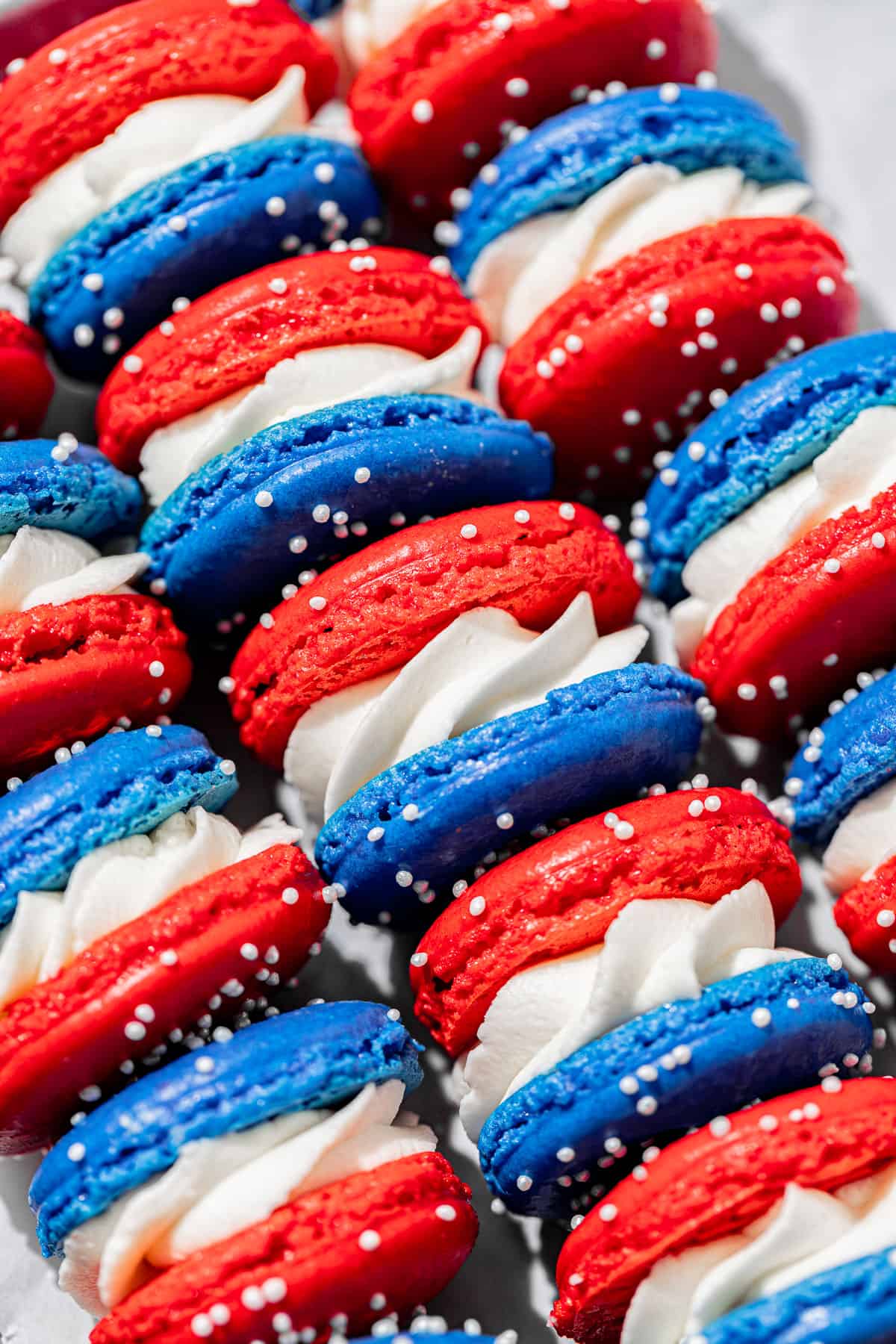
Expert Baking Tips
- Wipe down appliances with vinegar. Before making the macaron shells, wipe all appliances down with white vinegar to ensure they're clean and nothing with hinder the egg whites from wiping up.
- Freeze the shells after baking. If you have trouble peeling the macarons off of the parchment once they have cooled, pop them into the freezer for a few minutes and they should come off easily.
- Chill the macarons. The flavor of macaron shells develop more by the second day, so I recommend making them the day before and chilling them overnight, then assemble the next day.
Recipe FAQs
The swiss meringue method is my preferred method for making macarons, as it is the simplest and most stable meringue, in my opinion. The egg whites and sugar are combined in one bowl and heated over a double boiler with simmering water until it reaches 120 degrees F. Slightly heating the egg whites stablizes the meringue, which will increase your chances of achieving the correct consistency of macaron batter.
The key is to make sure the batter is mixed properly and the meringue is deflated enough. Once all of the dry ingredients are incorporated, deflate the macaron batter by spreading it against the sides of the bowl. This will ensure that the shells do not come out hollow.
Allow the macarons to rest long enough before going into the oven. I would recommend 30-45 minutes of rest time before baking. As they rest, a skin forms on the surface, which is what forces the macarons to bake upwards and grow feet!
Macarons require a low oven temperature for baking. I recommend baking them at 300 degrees F for about 12 minutes.
I have found that cracked macaron shells typically result from uneven heating or too high of a temperature. If you do not already have one, I highly recommend an internal oven thermometer. This will allow to ensure that your oven is exactly at 300 degrees F!
Storage Tips
Macarons will last for a few days stored in an airtight container at room temperature and up to a week in the fridge. I prefer to store them in the fridge not only so they will last longer, but also because I find that they taste even better cold.
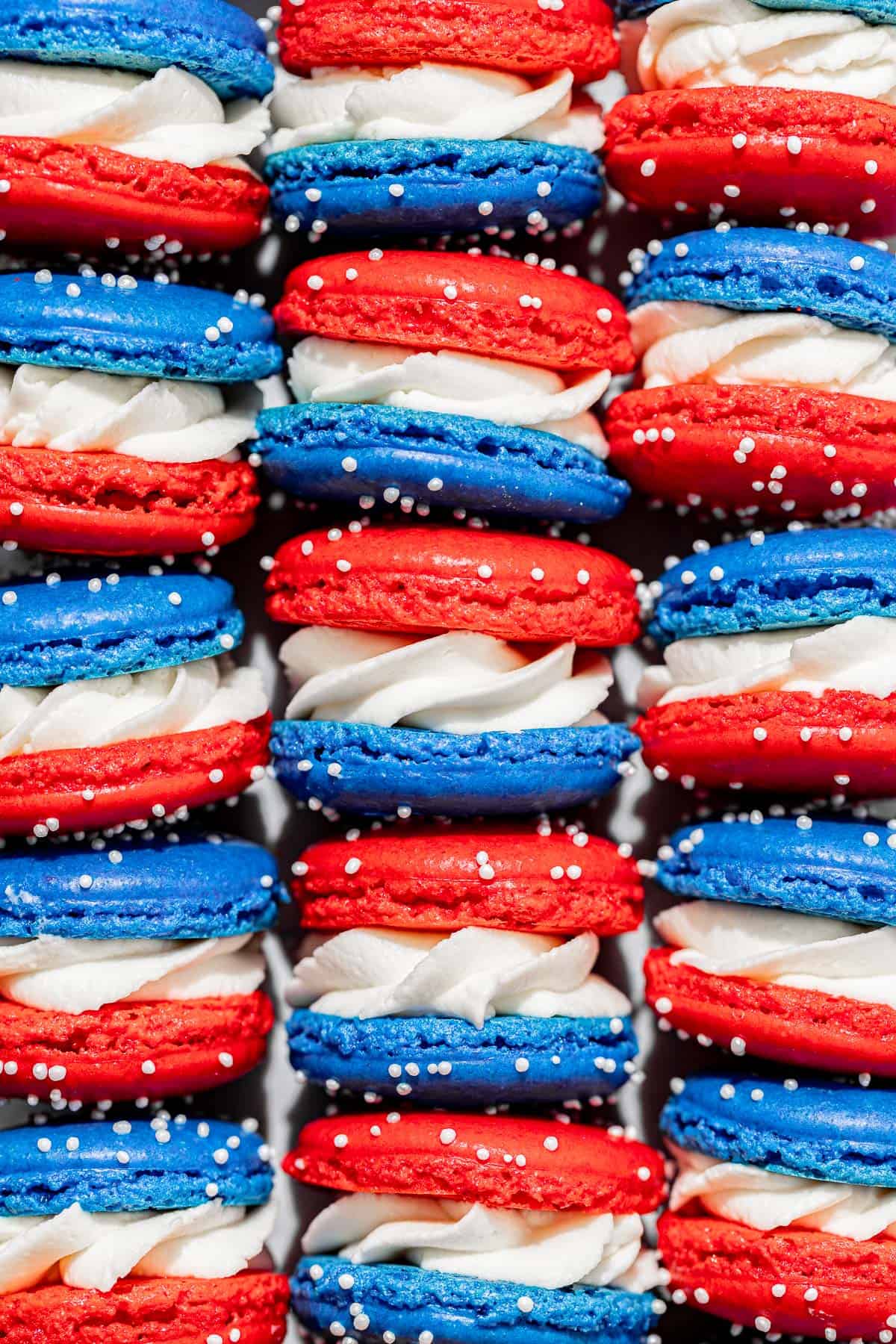
Baking in Grams
All of the recipes on this blog are carefully developed with gram measurements so you can easily recreate them in your own kitchen with success. Volume measurements are extremely inaccurate and leave room for significant errors. Not all measuring cups are made equally, so your one cup of flour will be different from my one cup of flour. By providing precise measurements in grams (aside from minor ingredients, which are given in tsp/tbsp), you can make these recipes accurately and with less cleanup! All you need is this kitchen scale.
If this still isn't enough to convince you, I have provided volume measurements in the recipe card. If you are interested in understanding the conversions, this is the best conversion chart.
But trust me, once you try baking in grams you'll never turn back!
Happy baking! x
Other 4th of July recipes to try
If you tried this recipe, I'd love to know how it turned out for you! Leave a star rating & review below and post a picture (or video!) on Instagram and tag me so I can see your bakes! Not ready to make this recipe yet? Click the heart button on the right of your screen to save it for later 🙂
📖 Recipe
4th of July Macarons
Ingredients
For the macaron shells:
- 130 g powdered sugar
- 120 g almond flour
- 105 g egg whites, about 3
- 100 g granulated sugar
- 1 teaspoon vanilla bean paste
- 10 drops red food gel
- 10 drops blue food gel
- White nonpareil sprinkles, optional
For the mascarpone frosting:
- 113 g (½ cup) heavy cream, cold
- 113 g (½ cup) mascarpone, cold
- 50 g (¼ cup) granulated sugar
Instructions
For the macaron shells:
- Prepare a macaron template by using a large piping tip or small round cookie cutter of about 1 ½″ in size to trace circles about 2 inches apart on one sheet of parchment paper. You will place this under another piece of parchment paper when ready to pipe the macaron shells.
- In a medium bowl, sift the almond flour and powdered sugar twice. Set aside.
- In a small heat-proof bowl, whisk together the egg whites and granulated sugar. Place the bowl over a small saucepan of simmering water, and whisk often until the sugar has dissolved or until the temperature is about 120 degrees F.
- Transfer the egg white mixture to the bowl of a stand mixer fitted with a whisk attachment. Whisk until the mixture reaches soft peaks. At this point, you can add the vanilla. Continue whisking the meringue until stiff peaks form.
- Divide the meringue evenly between two bowls, about 95g each. Divide the dry ingredients between the same two bowls, about 124g each. Add 10 drops of red food gel to one bow, and 10 drops of blue food gel to the other.
- Start the macaronage by using a rubber spatula to scrape around the sides of the bowl, then through the middle of the batter.
- Once the dry ingredients are fully incorporated, begin spreading the batter along the sides of the bowl to deflate it slightly. Continue scraping around the sides of the bowl and through the middle. The mixture is ready when you can draw several figure eights without the batter breaking.
- Transfer the batters to separate piping bags with small round piping tips (I used Ateco 802 & 803).
- Place your macaron template under another piece of parchment paper on a baking sheet and pipe the batter perpendicular to fill in each circle.
- Carefully remove the template and tap the baking sheet on the on counter a few times in order to release any air bubbles. It also helps to bang on the bottom of the baking sheet with your hand. Add the white sprinkles, if using.
- Let the macarons rest for about 30-45 minutes, or until they are dry and no longer sticky to the touch.
- Meanwhile, preheat the oven to 300 degrees F.
- Bake the macarons for about 12-14 minutes. Allow to cool completely before peeling them off of the parchment paper.
For the mascarpone frosting:
- In a medium bowl, add the heavy cream, mascarpone, and sugar. Use an electric mixer to beat on low-medium speed until thick, smooth, and stiff peaks form.
- Assemble the macarons immediately.
For assembly:
- Transfer the frosting to a piping bag fitted with a small star tip (I used Wilton 1M).
- Pair the macarons up and pipe the frosting onto the bottom shell.
- Place the paired shell on top, pressing down slightly to ensure they stick together.
- Place the macarons in the fridge until ready to serve.
Notes
- Wipe down appliances with vinegar. Before making the macaron shells, wipe all appliances down with white vinegar to ensure they're clean and nothing with hinder the egg whites from wiping up.
- Freeze the shells after baking. If you have trouble peeling the macarons off of the parchment once they have cooled, pop them into the freezer for a few minutes and they should come off easily.
- Chill the macarons. The flavor of macaron shells develop more by the second day, so I recommend making them the day before and chilling them overnight, then assemble the next day.

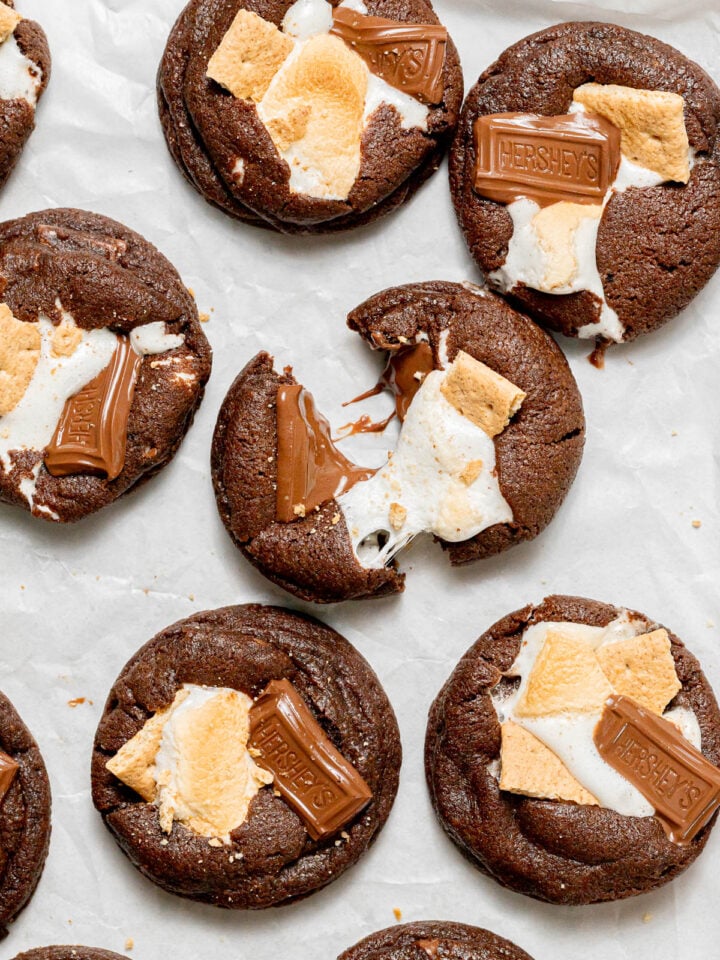
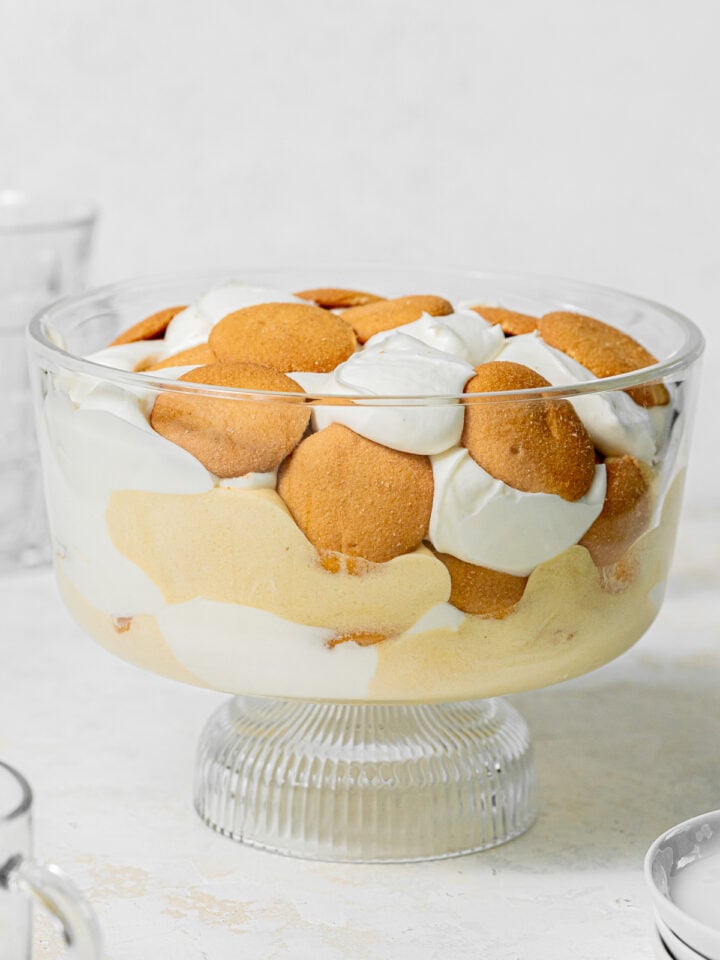
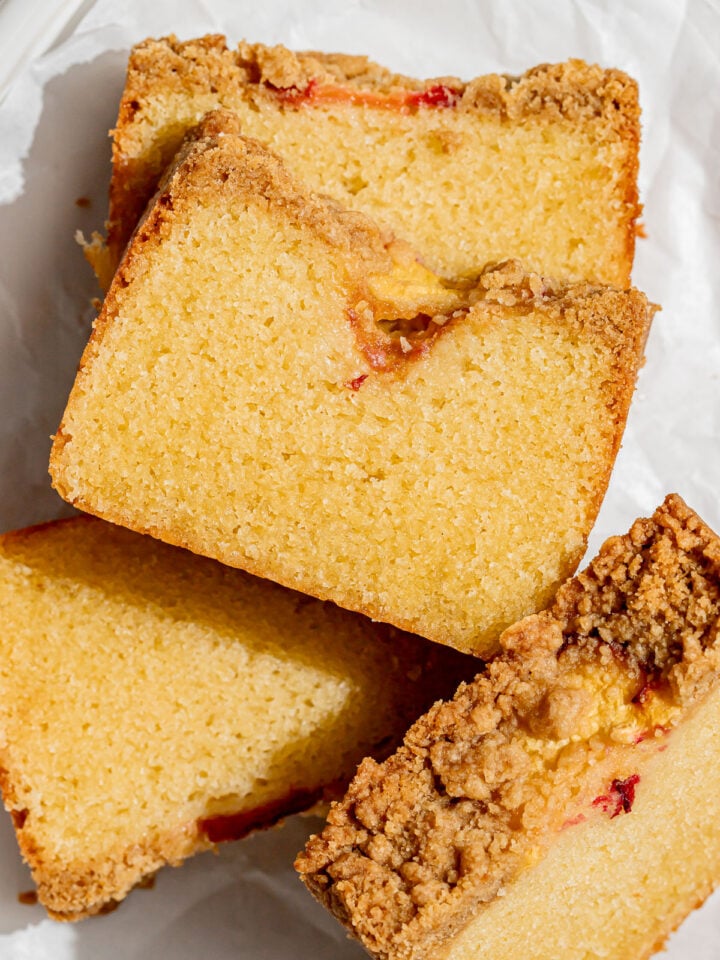
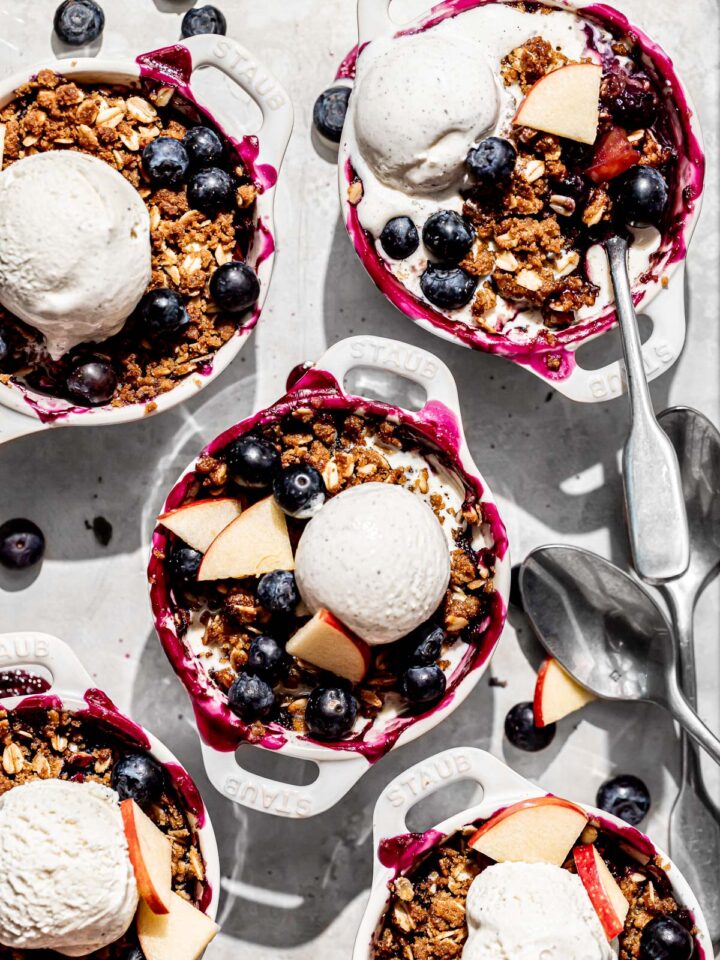
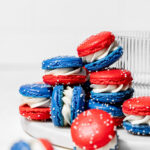
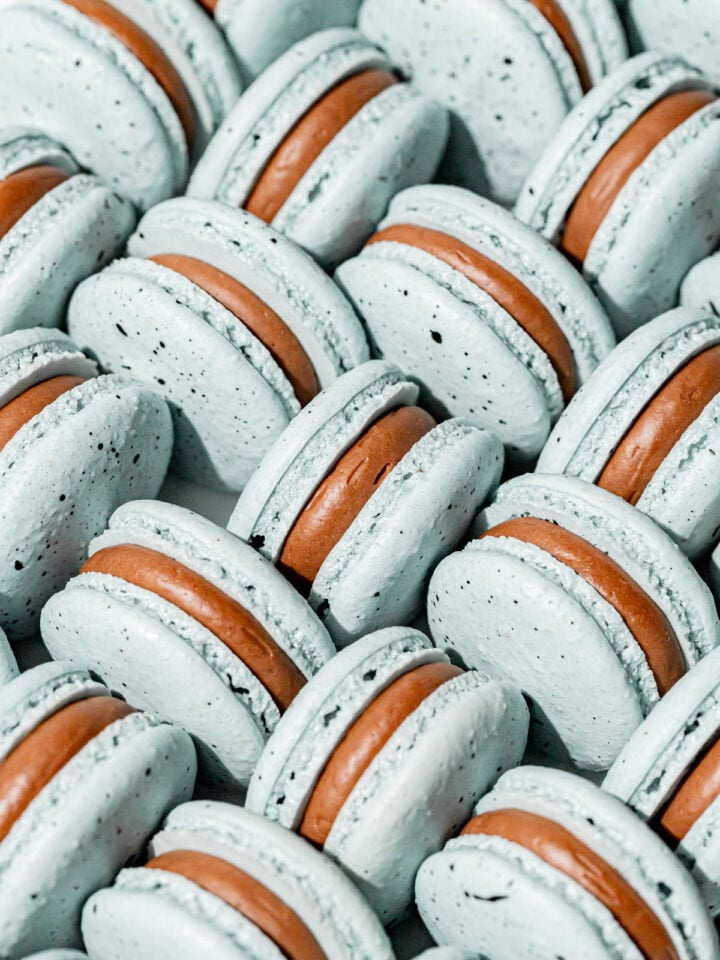
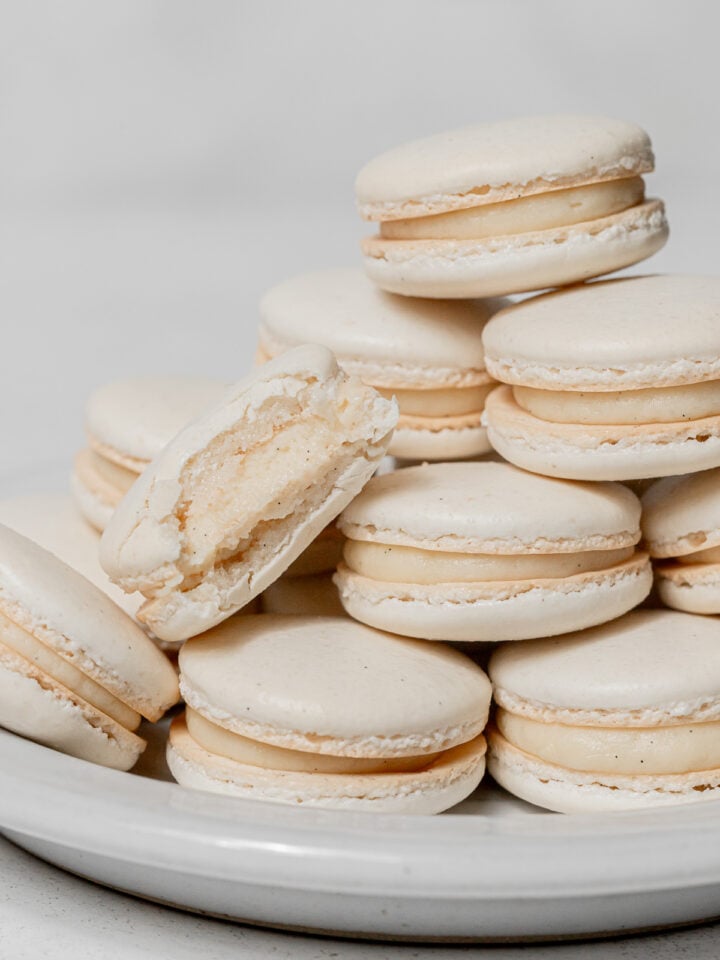
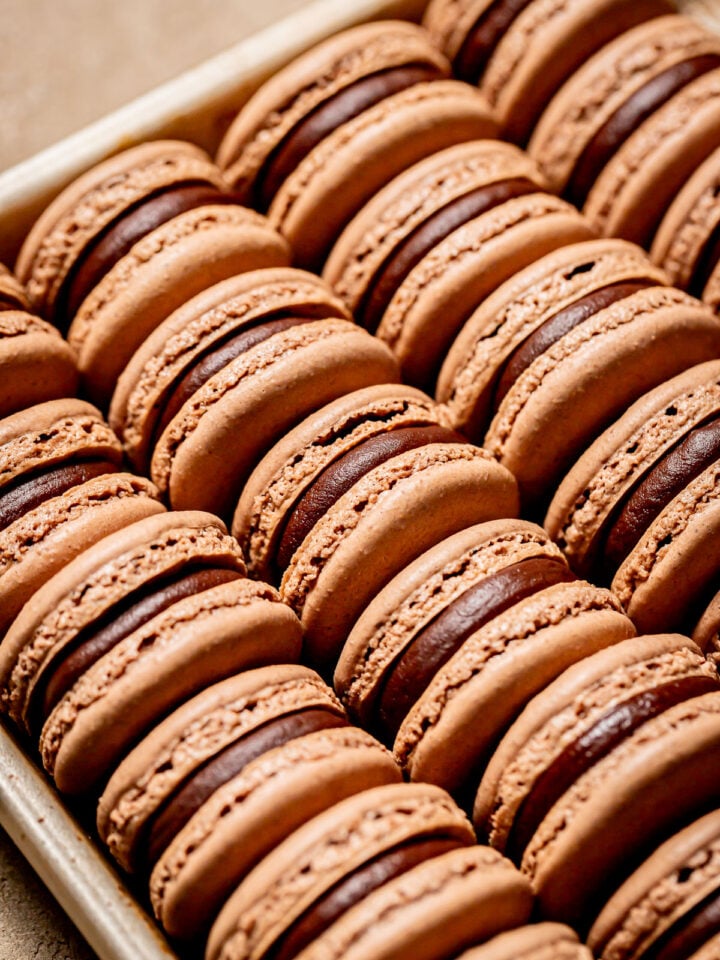
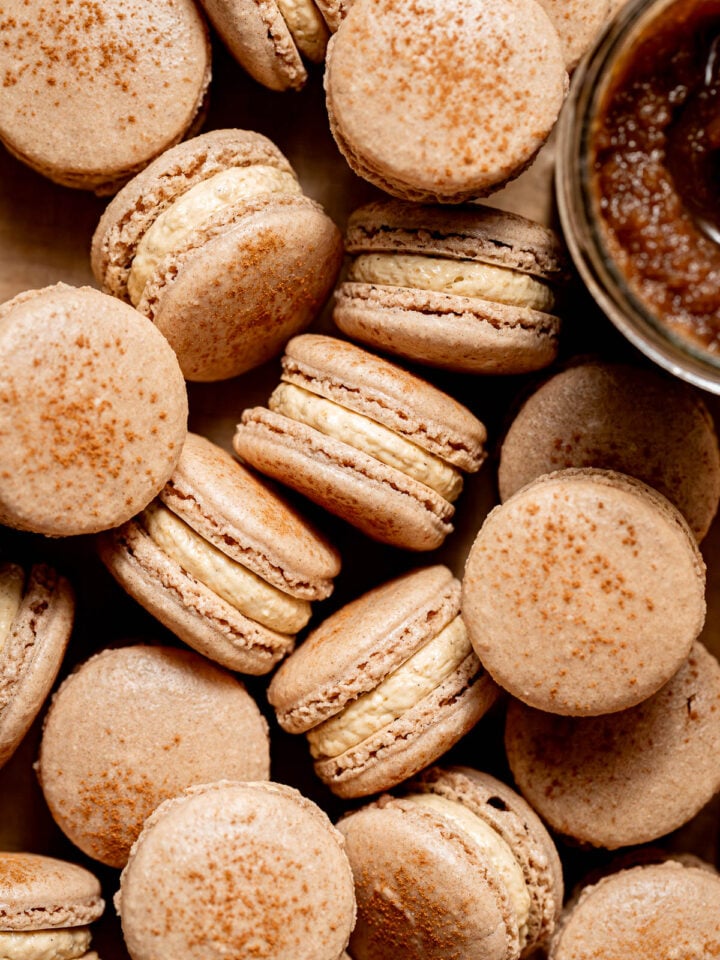
Shahira B says
I made this recipe a few days ago, they looked great, today I checked on them, the shells became very soft. This is the first time this happens. Could it be the mascarpone cheese?
Marianne Liedorff says
Can these be made with powdered Monk Fruit sugar?
Sloane says
Hi! I have not tested this recipe powdered monk fruit sugar before, so I'm not sure. Sorry!
Jenna says
Hello there!
I think you may be missing an ingredient in the egg and granulated sugar step? I cannot get it to get stiff peaks for the life of me. Is there supposed to be cream of tartar or something in it?
Sloane says
Hi Jenna! There is not an ingredient missing. If your meringue is not reaching stiff peaks, it could be that there was some egg yolk in the whites, which will prevent the egg whites from building up structure. The best way to separate an egg is by cracking the whole egg into a shallow bowl, and using a clean hand to pluck the yolk out. Any whites still attached to the yolk will fall back into the bowl with gravity. You'll be left with an unbroken yolk and a clean egg white!
It could also be that your bowl or whisk had some residue that prevented the egg whites from reaching stiff peaks. No matter how well they've been cleaned, always wipe them down with white vinegar to ensure they're sparkling!
Maddison says
I just made these this morning, and even though it’s not in the recipe, I’ve always made macarons with cream of tartar, so I added 1/8 tsp for every egg white used - so about 1/2 tsp. Those whites stuffed right up for me!